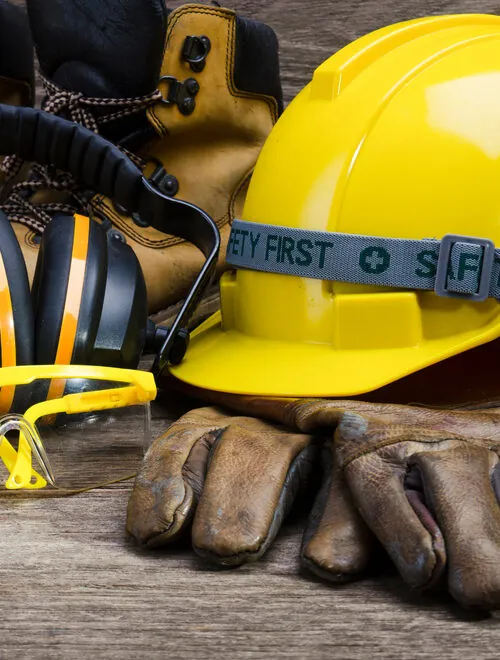
Shipping Safety Equipment and Gear
When it comes to shipping safety equipment and gear, FreightCenter brings transparency, efficiency, and most of all, cost-friendly prices.
How to Ship Safety Equipment and Gear
Shipping safety equipment and gear requires careful handling and adherence to specific guidelines to ensure their integrity during transit.
Some key steps to follow when shipping safety gear and equipment:
1. Proper Packaging: Use specialized packaging that protects against shocks, vibrations, and potential damage. This may involve using cushioning materials, secure enclosures, and proper labeling. Consider the nature of the equipment and gear and design packaging that fits their unique requirements.
2. Secure Labeling and Documentation: Ensure all necessary labels, tags, and documentation are securely attached to the packages. This includes appropriately identifying hazardous materials, if applicable, and compliance with shipping regulations and guidelines. Properly labeled containers help carriers handle them appropriately and minimize the risk of mishandling.
3. Choose Reliable Carriers: Select reputable carriers and logistics partners with experience shipping safety equipment and gear. Look for companies with a proven track record of handling such shipments securely and the necessary infrastructure to support safe transportation.
4. Consider Insurance: Evaluate the value of the safety gear and equipment shipped and consider purchasing insurance coverage to protect against loss or damage during transit. Insurance provides an additional layer of protection and ensures that you are adequately compensated in case of any unforeseen incidents.
5. Track and Monitor Shipments: Utilize your logistics partner’s tracking and monitoring services. This enables you to monitor the progress of your shipments and proactively address any potential issues. Real-time updates help you stay informed and maintain peace of mind throughout shipping.

FreightCenter is A Clever Choice for Ship Safety Equipment and Gear
- Reliable and Timely Deliveries: We understand the importance of timely deliveries regarding safety equipment and gear. Our extensive network of trusted carriers and logistics partners ensures that your shipments arrive at their destination on schedule. With [Company Name], you can rely on our commitment to punctuality, ensuring that your safety gear is ready when and where it is most needed.
- Cost-effective Solutions: Shipping safety equipment and gear should not break the bank. Our clever logistics solutions prioritize cost-effectiveness without compromising on quality and reliability. Our experts will work closely with you to optimize your shipping options, minimizing expenses while delivering exceptional service.
- Customized Packaging Solutions: Safety equipment and gear often require specialized packaging to ensure their integrity during transit. At [Company Name], we offer clever packaging solutions tailored to the unique requirements of each item. Our experts will assess the nature of the equipment or gear and design packaging that provides maximum protection against shocks, vibrations, and potential damage, keeping your shipments secure throughout their journey.
- Compliance with Safety Regulations: Shipping safety equipment and gear involves adherence to specific safety regulations and guidelines. Our team is well-versed in the intricacies of these regulations, ensuring that all necessary documentation, labeling, and packaging requirements are met. By partnering with us, you can rest assured that your shipments will be fully compliant, minimizing potential issues or delays.
- Tracking and Real-time Updates: Stay informed and maintain peace of mind with our advanced search and real-time updates. We provide visibility throughout the shipping process, allowing you to monitor the progress of your safety equipment and gear shipments. Our user-friendly online platform provides valuable insights, enabling proactive management and swift response to unforeseen circumstances.
The Importance of Shipping Safety Equipment and Gear
- Ensuring Workplace Safety: Safety equipment and gear play a vital role in safeguarding the well-being of workers in various industries. These essential items, from helmets and goggles to respiratory masks and protective clothing, mitigate risks and prevent accidents. Shipping them safely and efficiently ensures that workplaces remain secure, protecting employees and enabling businesses to operate smoothly.
- Supporting Emergency Responders: Emergency responders rely on specialized equipment to navigate hazardous situations and save lives. From medical supplies and breathing apparatus to high-visibility clothing and communication devices, shipping these essential tools enables responders to quickly and effectively provide aid in times of crisis. The reliable transportation of safety gear ensures that these brave individuals can confidently carry out their life-saving missions.
- Enhancing Public Safety: Safety equipment and gear extend beyond the workplace and emergency response scenarios. They encompass various products designed to protect the public in multiple settings. From fire extinguishers and first aid kits to child safety locks and personal protective equipment for everyday use, shipping these items safely ensures that individuals have access to essential tools that promote their well-being and peace of mind.
In a world where safety is a top priority, it’s crucial to have reliable and efficient transportation for safety equipment and gear. Handling these items with care is critical, whether it’s protective gear for industrial workers, life-saving equipment for emergency responders, or essential safety supplies for everyday use.
At FreightCenter, we recognize the importance of safeguarding what matters most. Through our intelligent logistics solutions and unwavering dedication to excellence, we ensure that safety equipment and gear arrive at their destination intact and ready to protect lives.
